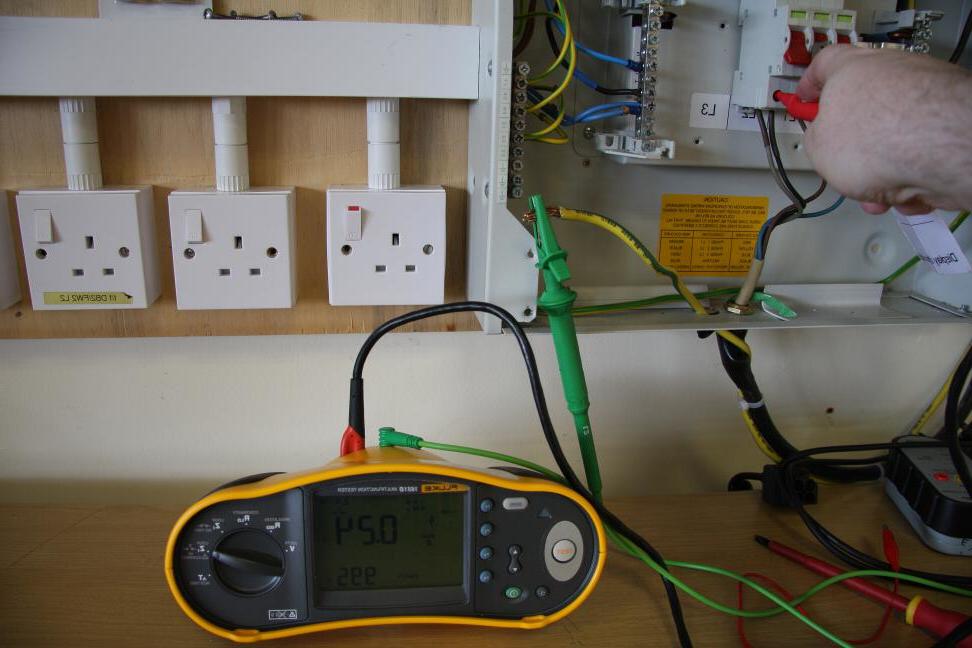On the market you will find that there are a number of different non-trip loop testers available for purchase. These may come in the form of a dedicated unit or as part of an MFT. Should you have the opportunity to put these testers to work side-by-side you will often find that the results they provideactually differ from one to the other.
The choice of such devices has never been wider and may appear, at first glance, to be a bit of a minefield which is why we have created this guide. It is difficult enough performing an Earthfault loop impedance test so our objective is to help make your life easier by reviewing the core issues ultimately affecting everyone’s Health and Safety!
If you are unsure about the process of an Earth Fault Loop impedance test, a video guide here should help to clarify things for you.
In this guide to non-trip loop testers we will take a look at some of the different testers that are available in order to determine what causes the difference in readings between different testers.
Just how does a non-trip loop tester actually work?
When put inplain English, a conventional loop tester works simply by putting a known load onto the circuit and then measuring the resultant voltage drop. It is from this simple process that the impedance of the circuit itself can then be calculated.
It stands to reason that because non-trip loop testers must not trip an RCD (Residual Current Device) that the current draw must be less than 18mA when actually measuring the phase-earth loop impedance itself. This is the normal threshold at which most common RCDs, that is those with a 30mA rating, can trip out.
Why do the results differ?
To answer this question we need to look at the different loop testers that are available on the market. This is because they will all have their own patented non-trip technology incorporated into their design, depending upon who manufactures them.
All that this means is that the testers are actually calculating their measurements in different ways!
When choosing an earth loop tester, one thing that is often overlooked is the manufacturer’s own specification. Next, for your information, we have listed out thespecified accuracy from the non-trip specification of three key UK manufacturers’ products:
You can clearly see from the above that there is a lot of margin for error in these readings. The Megger MFT1700 seriesspecification also accounts for noise margin as an ‘unknown variable’ in the measurement to further cloud the issue!
There is another issue that can impact on the readings and this is contact resistance. This can be around 0.03Ω but it can vary significantly.
It is easy to see then, given these wide variations, that a small difference in readings from different meters is possible, even from the same manufacturer!
Exactly what is noise margin?
Noise margin affects all non-trip loop testers. This noise is caused by anything that is connected to the system when the electrical test is performed. The actual way that the measurement is taken, and the extent of noise, will produce a difference in the results recorded.
Earlier on in this guide we stated that a non-trip tester should carry out theelectrical test at less than 18mA.
We found that most testers usedan average of 15mA over the course of the test. Do not forget that anything connected up to the circuit can produce noise and impact further on the recorded result.
Excessive Noise will cause incorrect readings
If there is a large amount of noise present in a circuit, then you may well find that the test takes rather longer than usual to complete. Excessive noise can even make it impossible to carry the test out. In this case a warning or error message would usually appear on the devices display.
Further details of any noise related error messages would usually be listed in the relevant user manuals.
What are the actual differences likely to be?
If you take another look at the accuracies specified above, then you would expect to see widely varying results. For instance, if we apply a value of 1Ω, then you can expect to see the following results, by device, within the bands listed below:
The above results would be deemed to be correct according to the individual manufacturer’sown specifications.
What is the best non-trip earth loop tester?
We have found that, in practice, all of the testers listed above performed much the same when it came to performing our test. The accuracy and result bands were all very similar.
The final conclusion of our test
Basically, what we found was that all non-trip testers are susceptible to noise. In real world practice you may find that a tester performs especially well on one site butthen has trouble with accuracy at the next. At the end of the day, this is basically down to both the way that each individual tester carries out its own measurement and exactly how it handles the noise signal that will be present.
Whatever make and model that you use itis always best practice to make certain that your tester is regularly calibrated.
You should also regularly check your device against a known source, such as a calibration checkbox, to be certain that you are getting readings that are as accurate as possible.
Electrical test equipment and Voltage testers of course come in all shapes and sizes – which we know makes your choice difficult – but regardless, we hope that this information has been useful to you.

